
Big Trout with Small Fly --Vol.5--
The Head of the Pool
Then Mary Anne and I moved downstream to Pike Pool in the River Em. There were still two anglers. So we went farther downstream around the forest to Home Pool. We looked around on the bridge. There were more anglers than in the morning but only a few of them were fishing. The rest got ready to go back. It is very common that anglers start fishing early morning, leave the river for lunch and come back again in the evening.That situation is similar to the Oshino River or the Yukawa River in Japan on clearly sunny days. It must be wiser to take a nap during the day of broad daylight. Mary Anne and I ate sandwiches near the bridge, looking at the pool.

Low water, a gentle stream, the glaring sunlight. The water temperature rose over to 20degs C.
The sunshine was beating on us like midsummer. My thermometer showed that the water temperature rose to 22 degs C near the bank. When we finished our lunch box the few remaining anglers left there. There was no sign of catching fish at all. It must be better to take a nap for night fishing.
Nevertheless, I stood at the riverside with my 16ft rod on the shoulder. There were only Mary Anne and I who stayed at Em. Finally I got a marvelous opportunity to fish without paying any attention to other anglers on the opposite bank.
I had already examined the head of Home Pool from the both banks. A shallow current under the bridge came near to the left bank and flowed into the pool. The head of pool was dotted with giant rocks, which formed pockets where I had hooked a fish on the first day morning (see part II). There was a deep channel just downstream, which was, according to Mr. Ulfsparre, probably over 3m deep even in such low water. The trouble was that it became suddenly deep behind the giant rocks in the head of the pool. Therefore, I could not make a strategy to cast the line farther upstream and to make the fly sink while it was drifting.

The fish bites, runs and in the next moment jumps high in the air.
I took notice of an inlet on the left bank of the head of the pool. The inlet seemed to be changed into a channel at high water. I heard it was 3m deep, too.
My strategy was to cast the line from the right bank to the inlet. I will have to cast the line more than 35m. But once I deliver the fly line into the inlet, my Flat Beam will be able to cross the heart of stream that became narrow in low water. That means my line will sink deeply without drifting downstream.
After waiting for the line to sink deeply enough, I will retrieve the line slowly. As it sinks slowly, I will never worry about snagging at the bottom even if the fly passes across the heart of the stream slowly. The hiding fish will instinctively jump at my fly that is passing slowly over its head.

I hooked a fish. It headed upstream, crawling the river bed.
I wondered whether things were going well as arranged or not. I walked into the right bank of the head of the pool with my heart pounding.
Suddenly the fish turned around and ran downstream. I lifted the tip of the rod high to prevent the line from scrubbing at the bottom. I was scared stiff whenever the line got entangled with waterweed.
The Den of Monsters
I had changed my tackle for the second day. Fly size was changed from size 6 to 4 to get a stronger hook. Usually Minus 2X leader is suitable for size 4 hook. But I chose Minus 6X and put 10ft of it to the fly in case it was scrubbed and damaged. As for the fly line, I chose Type II sinking line. It is really unfit for deep sinking but Type II sinking line never sinks too much even if we retrieve it slowly.
The fish swam around briskly in the pool and then struggled on the surface.
Fortunately, I took trial products of floating type of Flat Beam with me. Those floating models helped me very much because I had to soak the running line into slow current for a long time.
I started casting size 4 Em Shrimp towards the upper reaches of the inlet of the opposite bank. I delivered the fly at the brink of the opposite bank in order to avoid the drag as much as possible and lifted the rod in order to tighten all the running line in the air. The line tip had almost no movement behind the big rock. Probably it's about time the fly sank more than 1m deep. I retrieved the line even more slowly than other anglers do. Everything seemed to go well. The fly did not snag at the bottom although I retrieved the line slowly.
I moved 1m downstream every time I cast the fly. It happened at my third casting. When I began to retrieve the line, I felt as if my line were snatched away. I had no time to lift the rod but the line extended in the same way as I caught driftwood. It was the same feeling that I had the last evening (see part III). The whole line underfoot, which I had once retrieved, extended from the rod tip. Then I put my hand on the reel and tried to put the brakes a bit.

The fish finally came near to me after several minutes but still tried to hide under the rocks.
Immediately the fish began to run and in the next moment jumped high in the air. It was a sea trout. It jumped high above the surface again as it turned around dramatically. Bright black spots were dotted on its brown body. No sooner had I found the spots clearly than my line that had once been tightened in the air returned to me at high speed. I jumped out of the way just before the line hit me.
Probably the fish was about 13lb. It bit my fly easily and ran away easily.
I checked my fly and continued to fish down. The inlet spread a bit downstream of the opposite bank. I cast the fly towards its inner part as far as possible. Because the inlet was very long, the whole length of the fly line settled on the water beyond the heart of the stream. I counted from 1 to 15 and started retrieving the line quietly.

Finally I led the fish to the shallow part near the bank.
The line stretched in the same direction as I had cast it. As it crossed the heart of stream, it sank into the water without being dragged downstream. I retrieved the line about ten times. Probably the fly approached the heart of the stream. I still retrieved the line in the same pace. I thought I could see the fly line soon. Surely the fly crossed the heart of the stream around here.

The shallow part where waterweed grew spread behind me. I led my fish there carefully and finally held it in my arm.
A Black Sea Trout with Crooked Nose
My line stopped. I lifted my rod slowly, feeling the pull from its tip. Something was moving there. A fish must come again. I extended my line carefully, following fish movement. The fish headed downstream, suddenly turned around and started swimming upstream. There was no sign of coming up to the surface. It solely headed upstream, crawling at the river bed.There were a lot of rocks here and there at the upper reaches of my standing point, as I mentioned before. The fish was swimming upstream through those rocks. When its way was blocked by the rock, it turned around and headed upstream again. It went around the rocks and swam upstream to current of the head of the pool. Probably the channel came to a dead end. It turned around again, ran downstream at top speed and jumped high from the surface.
It was a sea trout, a very black one. When it jumped at the second time, I found its jaw crooked. It is a big male. Is my hook strong enough? I kept fighting carefully, handling it with kid gloves.

I could not slide the fish up to the bank but finally lifted it with my hands.
Fortunately, the fish had no intention to rush downstream. Instead it was crawling around the river bed. When I tried to pull it up, it struggled violently. Then I went up on the rock nearby and lifted my rod high in order to avoid the line from touching the rock in the water. The fish never ran a long distance while I never pulled it up to me with all my might. Either of us never got tired. Our fighting lasted long and finally my sea trout came up to the surface.
Its lower jaw was bent like a hook and the root of its tail was thick. It seemed to weigh about 22lb. A beautiful male sea trout. I removed Em Shrimp from the edge of its jaw. The fly came off very easily. I was satisfied that my careful fighting brought me a good result. If I had pulled the fish to me in the same way as I pulled salmon, I would not have caught it.
Now I found several anglers around Home Pool, who came back for evening fishing. I was standing in the middle of the pool and the end of the pool was not so distant. I decided to cast the fly another several times. I hurried to draw my line and extended it towards the opposite bank of the end of the pool where waterweed grew. The current flowed so slowly that the fly drifted only for a short distance after it settled on the water. I counted from 1 to 15 as before and retrieved the line.

A male sea trout. Its lower jaw was crooked like a hook. It was nearly 22lb.
I repeated my casting only several times when I got the same bite. How many fish does this pool have? My third fish was light but nearly 9lb. It can be said very big in an ordinary river. Actually, fishing in Em made us change our concept of fish size. It is only in the River Em all over the world that we can say that a 9lb sea trout is small.
As the fish was "small", I did not need to worry that it ran downstream. I fought with it carefully, only seeing that the hook did not come off. However, this fish suddenly ran and jumped twice just like the previous ones. It might have jumped more times. Now my line returned to me.
As more anglers gathered around Home Pool, I gave up fishing and went up on the bank. I was happy to catch a sea trout but at the same time deeply regretted that I missed two.
-- To be continued --
- NET SHOP INFORMATION
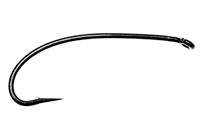
SL6 Black Spey Hooks
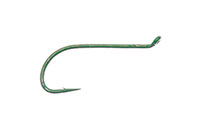
DU3 Limerick Spinner Hooks
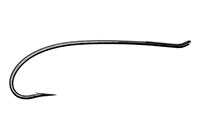
SL4 Single Bartleet Hooks
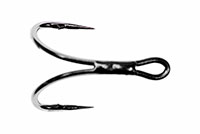
XD1 Tube Fly Double Hooks
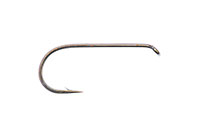
DD2 Flat Perfect Hooks
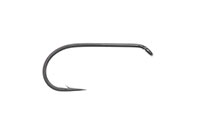
DD1 Black Terrestrial Hooks
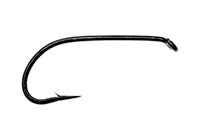
TD4 Old Limerick Wet Hooks
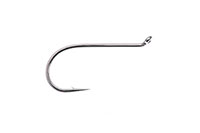
DU1 Silver May Hooks
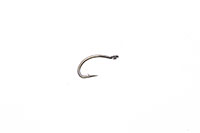
MU1 Flat Midge Hooks
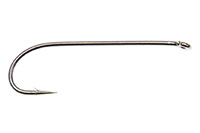
LD3 Long Limerick Hooks
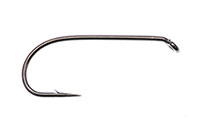
TD2 Summer Sproat Hooks
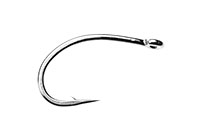
XS1 Tube Single Silver Hooks
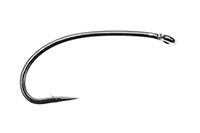
TD6 Siver Sedge Hooks

SL5 Black Spey Hooks

DU3 Limerick Spinner Hooks
- TROPHY CLUB
- FLY SHOW
- EXHIBITION
- MASTERS`
- FLY DRESSING CONTEST Archives
- TRAVELLER Archives
- TACKLE IMPRESSIONS Archives
- ANGLERS` PHOTO GALLERY Archives
- ----------------------------------------------
- トロフィークラブ
- フライショー
- エキシビション
- マスターズ
- フライドレッシング・コンテスト・アーカイヴ
- トラヴェラー・アーカイヴ
- タックル・インプレッション・アーカイヴ
- アングラーズ・フォトギャラリー・アーカイヴ
株式会社サワダ 185-0021 東京都国分寺市南町3-13-4
SAWADA'S INC. 3-13-4 Minamicho, Kokubunji, Tokyo 185-0021, Japan
写真・ドキュメントの無断転載を禁じます。
All the images and documents found on this site are owned by Ken Sawada and may not be used without permission.
But, link to this site is FREE.
Copyright © 2000 - 2025 SAWADA'S INC.. All rights reserved.
SAWADA'S INC. 3-13-4 Minamicho, Kokubunji, Tokyo 185-0021, Japan
写真・ドキュメントの無断転載を禁じます。
All the images and documents found on this site are owned by Ken Sawada and may not be used without permission.
But, link to this site is FREE.
Copyright © 2000 - 2025 SAWADA'S INC.. All rights reserved.
